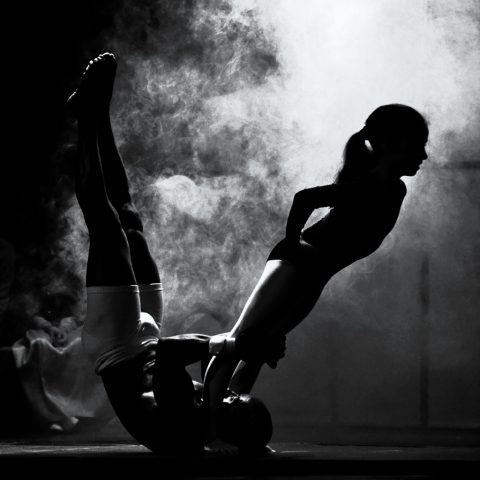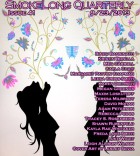“The Circus” can be read on several levels. There is the personal level—the circus employee’s injury—but there is also the level of allegory. I hope I’m justified in reading the circus as a metaphor for society. How does the relationship of master and servant fit into this?
The circus employee has written himself as “obsequious servant,” intimating a dictatorial master. So their relationship might be interpreted as a satirical representation of this type of abuse. But the master’s voice is absent here; its “starched and scratchy” influence is constructed from the circus employee’s servilities and protestations. In this sense, the master-servant dynamic feeds into an existential dimension, in which the circus employee’s lame finger, glittering frock coat and shorts etc. are merely manifestations of his imagination —”an idea of the circus on which he’d based his miserable little existence.” Interpreted in this way, his injury is “his miserable little existence,” which he tries to escape by writing himself into the circus—another society.
And the performer’s relationship to the tiger?
If the actual conflict is between master and servant, then the tiger is a displaced outlet for the circus performer’s frustration, because the animal is as much, if not more, of a pawn than he is. The irony, of course, is that the circus employee is the tiger’s master, and yet he feels persecuted by the animal. On whatever allegorical level ‘The Circus’ is read—social or existential—the circus employee is a pathetic subject, trapped in a position he cannot justify, explain or escape.
I love the deferential yet desperate voice of the character in “The Circus”; it’s a compelling razor’s edge. Is the germ for this story the circus performer’s voice? Was this a letter to the circus master from the beginning?
Yes, the circus performer’s voice was certainly the germ for the story. I began it as it appears, introducing him through his injury, after which he begins his letter. We went through the remaining process together. When his hyperbole started to break up in the last part of the letter, and he could no longer articulate himself, literally and symbolically, we realized that his servilities and protestations were off the mark. As his letter tears through the air and floats to the floor, he is disillusioned, and the narrative voice returns to the third person, and becomes less effusive and somewhat harder.
It’s a brilliant voice. In the end, the performer sees that the circus has in some way broken all the performers. Is there a political message in this?
The circus performers are, as you say, broken by their profession, which reflects the perversity of the circus as an enterprise in which its employees’ distortions are exploited. There is an allusion here to the dehumanisation that occurs with persecution. Prisoners are defined by physical limitation and bodily degradation. The extremes are pronounced in the circus performers. But I think that the governance of the show—in this context, the “top-hatted mother goose of the carnival”—is too easy a target, because he is, after all, subject to the public, “the crowds coming back to the circus for more.” It is the construct of the circus as a whole, and the “principles” on which it operates, which is questionable.
Carla, thank you for elucidating “The Circus.” What are you working on now?
Writing literary essays for university takes up much of my attention.
Thank you for giving me the opportunity to reflect on my own creative work. And thank you to everyone at SmokeLong Quarterly.



 The core workshop of SmokeLong Fitness is all in writing, so you can take part from anywhere at anytime. We are excited about creating a supportive, consistent and structured environment for flash writers to work on their craft in a community. We are thrilled and proud to say that our workshop participants have won, placed, or been listed in every major flash competition. Community works.
The core workshop of SmokeLong Fitness is all in writing, so you can take part from anywhere at anytime. We are excited about creating a supportive, consistent and structured environment for flash writers to work on their craft in a community. We are thrilled and proud to say that our workshop participants have won, placed, or been listed in every major flash competition. Community works.